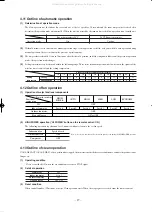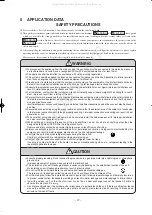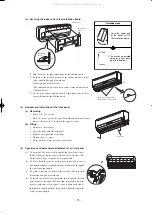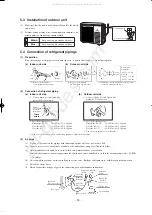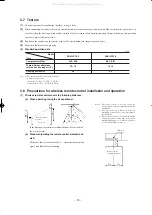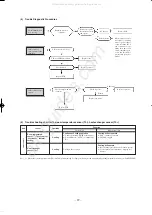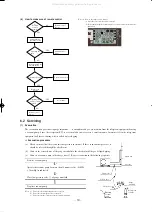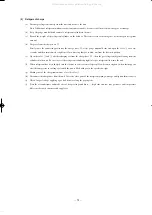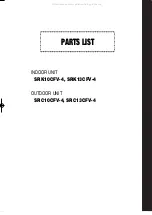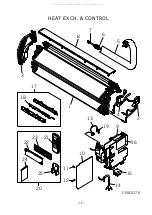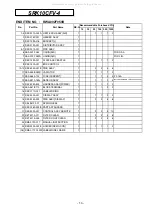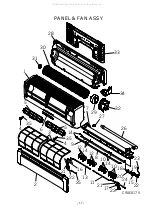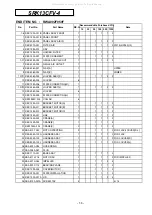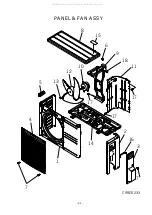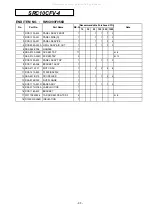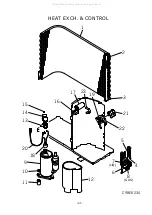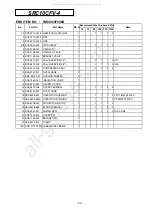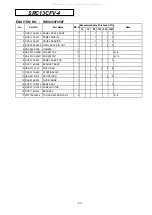
-
31
-
(2)
Refrigerant charge
(a)
Discharge refrigerant entirely from the unit and evacuate the unit.
Note: Addition of refrigerant without evacuation is unreasonable, because it will result in low charge or overcharge.
(b)
Keep the gauge manifold and connect a refrigerant cylinder to the unit.
(c)
Record the weight of the refrigerant cylinder on the balance. This is necessary for making sure of the charged refrigerant
amount.
(d)
Purge air from the charge hose
A
.
Firstly loose the connecting portion of the charge hose
A
at the gauge manihold side and open the valve
3
for a few
seconds, and then immediately retighten it after observing that gas is blow out from the loosened portion.
(e)
Open the valve
1
and
3
after discharging air from the charge hose
A
, then the gas refrigerant begins flowing from the
cylinder into the unit. Be sure to erect the refrigerant cylinder upright to let gas refrigerant flow into the unit.
(f)
When refrigerant has been charged into the system to some extent, refrigerant flow becomes stagnant, when that happens,
start the compressor in cooling cycle until the unit is filled with gas to the specified weight.
(g)
Making sure of the refrigerant amount, close the valve
3
.
(h)
Disconnect the charge hose from the unit. Cover the valve ports of the refrigerant piping with caps and tighten them securely.
(i)
Check for gas leakage applying a gas leak detector along the piping line.
(j)
Start the air conditioner and make sure of its operating condition ...... high side and low side pressures and temperature
difference between return air and supply air.
All manuals and user guides at all-guides.com

